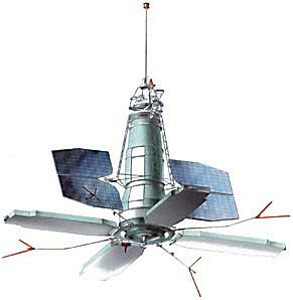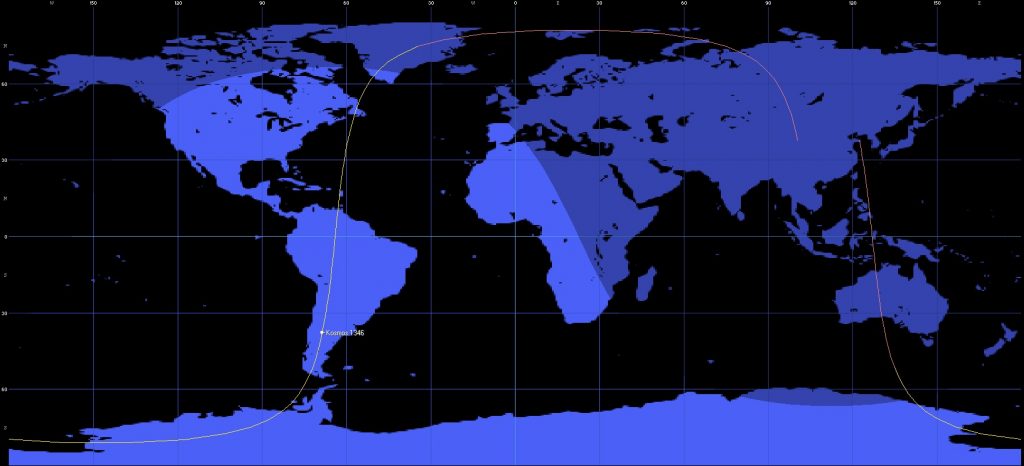Re-Entry: Kosmos 1346

Kosmos 1346 – a Tselina-D Electronic Intelligence Satellite – re-entered the atmosphere on December 17, 2017 after over 35 years in orbit.
The Tselina program – launching satellites between 1967 and 2007 – operated two types of satellites – Tselina-O, tasked with low-sensitivity measurements of radio emitters over a broad area to identify targets of interest and the Tselina-D spacecraft with high-sensitivity sensors to provide signal characterization and intercepts. Additionally, Russia launched US-P and US-PM Ocean Monitoring Satellites from 1974 through 2006 to track the movement of naval vessels and characterize their emissions. A third generation of Tselina satellites entered development in the 1980s but the project ended with the fall of the Iron Curtain.
The first Tselina-D satellite was launched in 1970 and was followed by nearly 70 satellites launched until 1994. The Tselina-D satellites had a launch mass of about 1,800 Kilograms and had an expected operational life of six months. The satellites operated in orbits around 550 Kilometers at different inclinations around 80 degrees. Tselina-D satellites built a constellation with satellites in several planes spaced by 30° in the early phase of the program and 60° later in the program.
NORAD ID: 13120
Origin: Russia
Object: Kosmos 1346 (Tselina-D No. 34)
Type: High-Resolution ELINT Satellite
Manufacturer: Yuzhnoye
Mass: ~1,800kg
Inclination: 81.1°
Launched: March 31, 1982 – 16:27 UTC
Launch Vehicle: Vostok 8A92M
Launch Site: Plesetsk, Russia
Re-Entry Prediction: December 17, 2017 – 16:29 UTC +/-31 Minutes
Re-Entry Zone: South Pacific
Re-Entry Orbit


